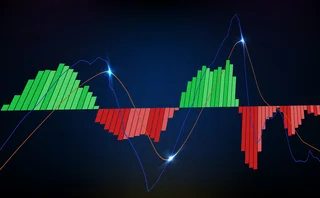
The vanna-volga method for implied volatilities
The vanna-volga method is a popular approach for constructing implied-volatility curves in the options market. In this article, Antonio Castagna and Fabio Mercurio give it both theoretical and practical support by showing its tractability and robustness
The vanna-volga (VV) method is an empirical procedure that can be used to infer an implied-volatility smile from three available quotes for a given maturity.1 It is based on the construction of locally replicating portfolios whose associated hedging costs are added to corresponding Black-Scholes (BS) prices to produce smile-consistent values. Besides being intuitive and easy to implement, this procedure has a clear financial interpretation, which further supports its use in practice.
The VV method is commonly used in foreign-exchange options markets, where three main volatility quotes are typically available for a given market maturity: the delta-neutral straddle, referred to as at-the-money (ATM); the risk reversal for 25D call and put; and the (vega-weighted) butterfly with 25D wings.2 The application of VV allows us to derive implied volatilities for any option's delta, in particular for those outside the basic range set by the 25D put and call quotes.
Only users who have a paid subscription or are part of a corporate subscription are able to print or copy content.
To access these options, along with all other subscription benefits, please contact info@risk.net or view our subscription options here: http://subscriptions.risk.net/subscribe
You are currently unable to print this content. Please contact info@risk.net to find out more.
You are currently unable to copy this content. Please contact info@risk.net to find out more.
Copyright Infopro Digital Limited. All rights reserved.
As outlined in our terms and conditions, https://www.infopro-digital.com/terms-and-conditions/subscriptions/ (point 2.4), printing is limited to a single copy.
If you would like to purchase additional rights please email info@risk.net
Copyright Infopro Digital Limited. All rights reserved.
You may share this content using our article tools. As outlined in our terms and conditions, https://www.infopro-digital.com/terms-and-conditions/subscriptions/ (clause 2.4), an Authorised User may only make one copy of the materials for their own personal use. You must also comply with the restrictions in clause 2.5.
If you would like to purchase additional rights please email info@risk.net
More on Equity markets
The future of equity derivatives: perspectives for UK equities and dividends
Managing equity and dividend risk today requires new trading strategies and products. In a webinar convened by Risk.net and hosted by Eurex, three experts discuss what’s next for the UK and European markets.
Follow the moneyness
Barclays quants extend Bergomi’s skew stickiness ratio to all strikes
What gold's rise means for rates, equities
It has been several years since we have seen volatility in gold. An increase in gold volatility can typically be associated with a change in sentiment and investor behavior. The precious metal has surged this year on increased demand for safe haven…
Breaking the collateral silos – Navigating regulation with a strategic alternative
Emmanuel Denis, head of tri‑party services at BNP Paribas Securities Services, discusses why financial institutions must rethink old practices of collateral management and instead adopt a tri-party approach, with which equities can be managed as…
BAML and Morgan Stanley shift Indian P-notes to Europe
Tax changes trigger move out of Mauritius and Singapore
Volatility traders wrestle with digital risk of Brexit
Skew on major indexes leaps after market wakes up to risks of UK's referendum
New US tax rules could hamper ETN market, dealers warn
IRS’s forthcoming Section 871(m) rules could inadvertently capture legacy ETNs
Dealers fear death of dividend risk premia strategy
Shrinking dividend futures premium hurting investors








